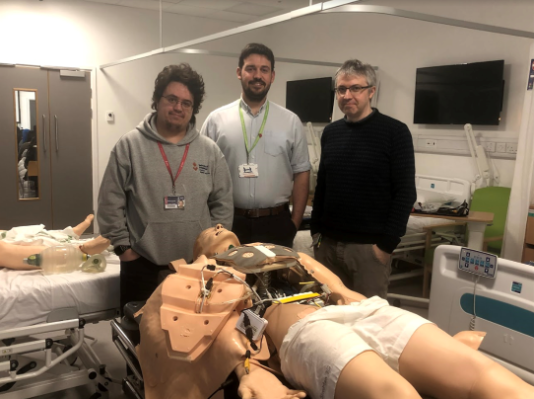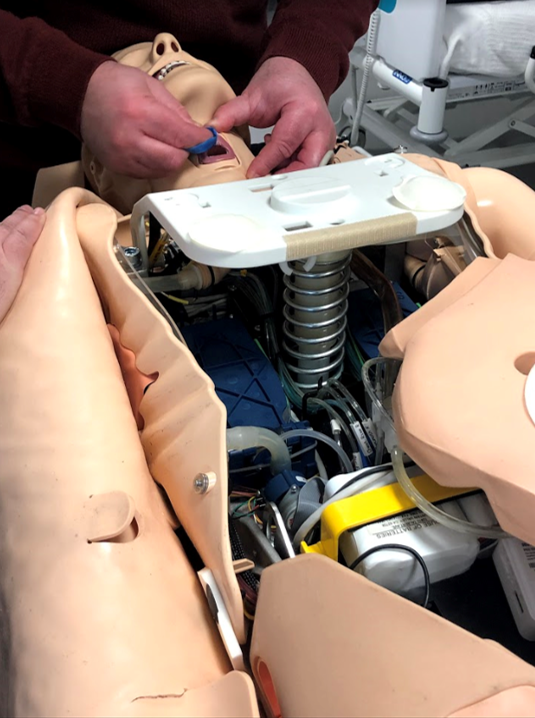Mark Birch, Field Service Engineer from Laerdal, visited University of Sunderland to deliver expert training on how the high fidelity manikins, also known as ‘SimMan 3G’, work.
On Friday 1st February Alison Rutherford, Academic Technical Support Manager in Healthcare, arranged to have the expert come into University of Sunderland to deliver training on our state of the art equipment. Two Senior Technicians in Healthcare Support, Shaun Palmer and Peter Sleeman, along with Healthcare Support Technician Byron Aytoun attended.

Byron Aytoun, Healthcare Support, said, “It gave us the chance to learn more about our equipment. We learned how to troubleshoot, and resolve issues ourselves, which is incredibly useful.”
Laerdal produces the manikins, which are emergency patient simulators. They enable high quality training to take place in a safe and secure environment, where the SimMan 3G is viewed as a real patient for students and trainee paramedics to gain real world experience on. Where the manikin reacts as a real patient would, without any of the risks.
Shaun Palmer, Healthcare Support, said, “By using life like manikins, we are able to immerse the students in a dynamic learning environment. When something goes wrong with the manikin, we (the Technical Team) then become the students. It becomes like an adult version of Operation, attempting to resolve any issues and get it working again.”
University of Sunderland purchased two high fidelity manikins at the end of 2011. They both come with a host of features that allow anyone studying in the sciences complex to gain training in a realistic setting. They breath, react to drugs, blink, bleed, sweat and even have pulse points in the same place a living person would, along with much more.
The four members of Technical Services who took part in Laerdal’s installation training, were taught about the basic functions of the manikin, and how they can complete basic repairs themselves. This will save the University money, so the healthcare technicians can do it themselves, rather than pay for someone from Laerdal to come out and do the repairs.
Peter Sleeman, Healthcare Support, said, “The head to toe guide to the manikin has given me a great deal more confidence in handling the problems that may arise. There were a number of ideas to adapt and enhance the manikins for training scenarios, I feel some of these could be used to enhance some of our current clinical training.”

The academic technicians even received live demonstrations. While Mark Birch was stripping the manikin down he noticed a couple of quick fix issues. He even got the technicians to take part each time so they could learn as they went. Later in the day Mark set up some scenarios for the technicians. In each scenario something different went wrong with the manikin, which the technicians would then have to find the fault, assess and repair it. This was all done in a controlled environment to give the technicians experience and confidence in applying what they have learned, removing the chance of the manikin getting damaged.
The training was a welcome experience for our academic technicians, to help further their specialist knowledge on what facilities we offer the students. On top of the money savings involved it gives them the opportunity to provide further opportunities for them to pass on their knowledge to students and academic staff. They will now be able to take ownership as our onsite experts, and enable them to make judgements on what they can and cannot be used for.